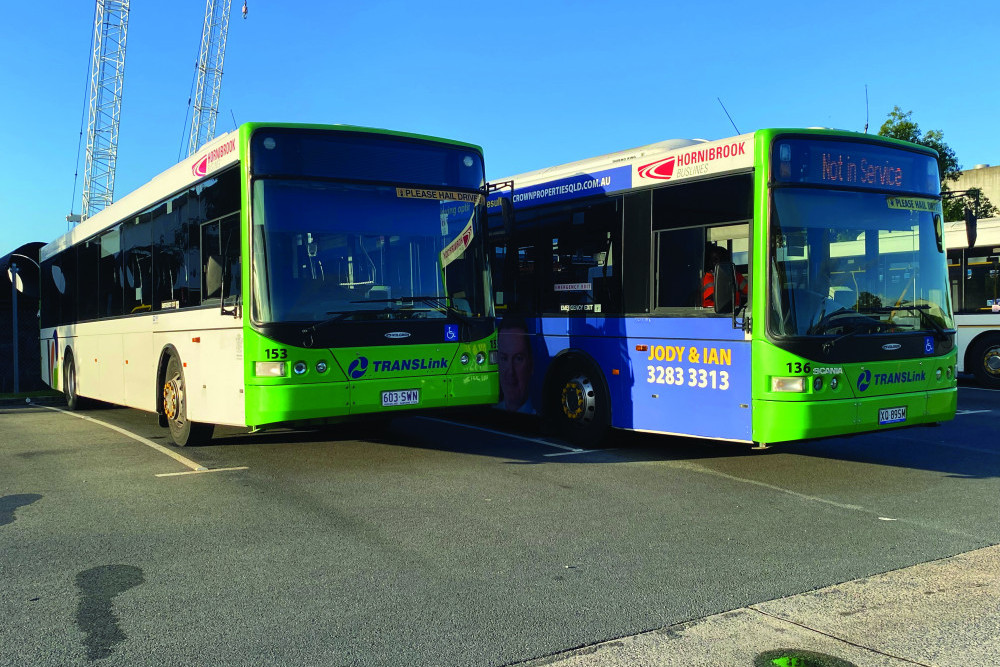News
4 May, 2022
Calls for transit lanes to reduce congestion
IMPROVEMENTS to public transport networks could play a role in reducing traffic congestion, by improving the reliability and popularity of services.

Ray Morgan, Operations Manager for Hornibrook Bus Lines, said there were a number of issues preventing wider usage of public transport in the area.
The ability for operators to access dedicated bus lanes, or even busways, on crowded arterial roads like the Bruce Highway and Anzac Avenue could make a significant difference to public transport, Mr Morgan said.
“If there were dedicated bus lanes available, or even a busway, similar to what operates in Brisbane, public transport could be more efficient, effective and attractive to commuters, helping to take cars off the roads and reducing peak hour congestion,” Mr Morgan said.
With buses currently not seen as a viable option to private vehicles, Mr Morgan said this needed to addressed.
“Traffic is a major issue, it makes services appear less reliable and no more convenient than taking a private car to the same destination.”
“In North Lakes, and other ‘new build’ suburbs, if there is no service available when people move in, it means they will use private cars.”
Urban design, including new suburbs and sub-divisions, is also vital, Mr Morgan said, to ensure there is sufficient access for public transport operators.
“We need to get the urban design in place, to allow for various bus sizes from the outset.
“Service providers or operator representatives should be offered an opportunity to have input into designs, we need to ensure road designs allow for services to be provided.”
With transport a ‘necessary’ public service, Mr Morgan said it provided options to all members of the community.
“Public transport allows for all people to participate in society.”
Environmental factors also needed to be considered, with buses offering potential solutions to a variety of issues.
While reducing traffic congestion was the most obvious, with a single bus able to replace up to 50 cars, Mr Morgan said there were other factors to be considered.
With a variety of power sources available to operators, including cleaner diesel engines, as well as natural gas, hybrid power and full electric, Mr Morgan said these should be taken into account when planning the future of urban transport.
Currently, Mr Morgan said there are a number of challenges facing operators in attempting to increase passenger numbers, particularly on commuter routes.
“While Covid has been an impact, that has largely been beyond the control of operators and regulators.
Other areas to be addressed included accessabiliy and connectivity, Mr Morgan said.
“When it comes to accessability, we are talking about the distance to the nearest pick up and drop off point, with connectivity, we are referring to interoperability with other public transport, including trains.”
With train station redevelopments as an example, Mr Morgan said if a small number of carparks were removed, it could open the way for greater connectivity between buses and trains.
“While it may cost some some parking facilities, the overall gain is an increase in patronage and a reduction in the overall traffic on the networks, which benefits everyone.”
The idea would be to create ‘mini interchanges’ at each rail station, with buses bringing passengers from their homes into the interchange, where they could connect with other buses or trains.
“We admit, it would cost perhaps 10 car spaces, but we would be able to replace those 10 cars, that are often parked for a whole day, with many more passengers, creating a net gain of passengers, while also taking all of those cars out of the road network.”
Mr Morgan said there are investigations underway into creating an ‘on demand’ service for suburban areas.
“The on-demand service will go to your doorstep, we would get a call, pick up the customer, go the nearest hub, perhaps picking up others along the way.
“It is a type of modified UBER service, but designed to connect to other bus services at an interchange point.”
Mr Morgan said greater consideration of public transort in new developments was vital, with independent bodies such as the Queensland Bus Industry Council needing a voice in local government decision making processes, to ensure developments met minimum access standards.
With a number of State Government agencies having similar inputs, to ensure new designs met minimum criteria, he said this should be extended to allow access to public transport.

